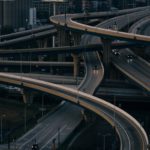 A common accusation against American cities is that they have been designed more with cars in mind than people. Indeed, many highways have been built in ways that destroy and divide communities and neighborhoods.
A common accusation against American cities is that they have been designed more with cars in mind than people. Indeed, many highways have been built in ways that destroy and divide communities and neighborhoods.
Research from Ohio State University explores how these communities can be recreated virtually so that people can better understand precisely what has been lost.
“These highways just ripped through the middle of neighborhoods, disconnecting communities from each other and destroying homes and businesses that would never come back,” the researchers explain. “What we plan to do is show what these neighborhoods looked like in realistic detail before these interstates were built and learn more about what was lost.”
Going back in time
The researchers used data from the Sanborn Fire Insurance maps, which are hand-constructed maps of all American cities that were created for fire insurance purposes. The maps allow the team to reconstruct what neighborhoods look like at the building level.
The team then developed machine learning algorithms that extracted key information about each individual building, including their footprints, location, number of floors, primary use, and even their construction materials.
“We will be able to get a very good idea of what the buildings looked like from data we get from the Sanborn maps,” they explain.
The team plans to use this information alongside data about land parcels from the city in order to get street addresses for each building so that they can then be linked to city directories that will hopefully reveal how each building was being used. This will give them the requisite information to develop their 3D visualizations.
“Our ultimate goal would be to come up with 3D visualizations that are realistic enough to give people a visceral feeling of what those neighborhoods were like,” the team continues.
Ghost neighborhoods
The Ghost Neighborhoods project is beginning in Columbus with the Hanford Village neighborhood that was destroyed by the I-70 that was constructed through the city. It’s believed that around 100 houses were destroyed during the construction of the highway, with many of the occupiers believed to be Black veterans of World War II.
“The GI bill gave returning veterans funds to purchase homes, but they could only be used on new builds,” the team explains. “So most of the homes were lost to the highway not long after they were built.”
After completing this initial step, the team plans to move on to Bronzeville, Flytown, and Franklinton. They believe that the destruction of communities by interstate highway construction is a national problem that is slowly being recognized.
“Many of these freeways are at the end of their life cycle and hard decisions need to be made about what should be done with them,” they conclude. “Some cities are choosing to eliminate them. Highways won’t be removed everywhere, but if we’re going to live with them, we have to think about what we need to do the mitigate the harms they are causing.”